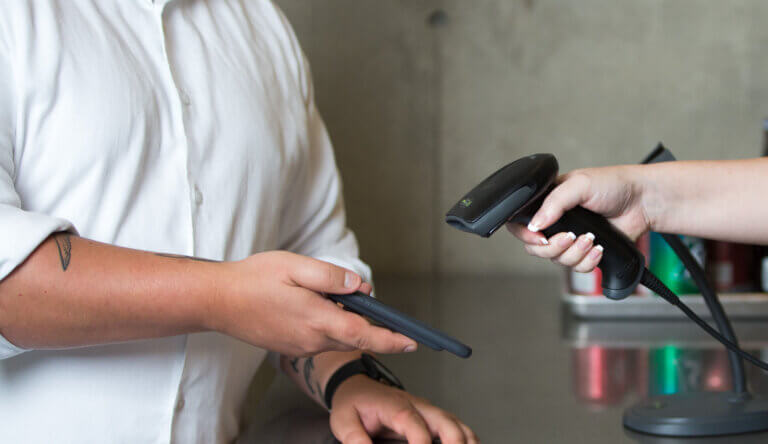
Retention is the Metric, Loyalty is the Goal
In this guest post from Prolific Interactive VP Fiona O’Donnell-McCarthy, learn how to take a qualitative and quantitative approach to measuring and improving customer loyalty.
Over the past decade, Prolific Interactive has partnered with eCommerce startups like ModCloth and Rent the Runway and global retailers like Gap and Saks Fifth Avenue to develop mobile strategies and build innovative customer experiences.
The mobile experiences we develop typically focus on the relationship between a brand and their existing customers, so we’ve spent a lot of time thinking about how to build valuable long-term customer engagement.
Understanding Customer Loyalty by Looking at Customer Journeys & Customer Retention
We avoid the term “customer loyalty,” because it’s not something you can measure. What we do instead is measure customer retention and build a deep understanding of customer engagement and journeys across channels. We focus our product development and optimization efforts on improving retention, informed by qualitative insights from the customer journey every step of the way.
How to Get a Clearer Picture of Your Customers’ Journeys
To start shifting your mindset from “customer loyalty” to customer retention, you need to develop a clear picture of your customer journey across channels.
Outline your current customer touchpoints and how they fit together. Start from your marketing touchpoints, outline the story they tell and how they feed into your digital experiences.
If you’re a brick-and-mortar retailer, document how the online journey connects to the offline experience and back. Once you have the touchpoints documented, break the journey into phases and identify gaps in the experience. Do all of the touchpoints connect for your customers? Do they feel known, understood, and appreciated throughout their journey? Can they interact with you how, when, and where they want?
Interview both your new and loyal customers about the highlights and lowlights they’ve experienced with your brand. This qualitative research will help you build a clear picture of your customer behaviors and motivations and identify key problems to be solved and opportunities to improve retention.
Boost holiday retail sales with our year-round planning guide for marketers. See what you can do to prepare throughout the year for success,with quarterly to-do’s, recommendations and resources.
There will likely be many opportunities to improve the user experience based on this qualitative research but you’ll need data in order to prioritize the opportunities based on potential impact.
One approach to making these trade-offs is to focus on understanding the leading indicators of retention and churn. The questions you’ll want to be able to answer include:
- What is your most valuable segment of users?
- What are the behaviors that differentiate them from other less valuable segments?
- How might you optimize your product to make it easier for the less engaged segments to start behaving like your most loyal cohort?
- How much would their behavior have to change to justify the investment to improve their experience?
The latest product analytics tools (like Amplitude) can put this data in hands of your business users and product teams. In the absence of the right long-term value metrics, it’s easy to focus only on driving short-term metrics like visits and year-over-year conversion.
Putting the right data toolsets in place will help you prioritize your experience investments based on driving long-term customer retention rather than hitting last year’s conversion comp.
See how leading brands are pinpointing and expanding the value of their customer engagement campaigns — on mobile and across channels to prove ROI.
A Practical Example: ModCloth
Let’s walk through a practical example of how these qualitative and quantitative approaches fit together to inform user experience strategy.
At ModCloth, there were segments of customers coming back to the site daily. We knew they were looking at our new arrivals feed where we launched 20-50 new products each day. We interviewed these customers to learn more about their behaviors.
One of our insights was that our customer viewed new arrivals for entertainment, not for shopping. She tended to think of our new products as a queue that needed to be cleared — she would come and look at the feed until she got to an item she recognized then leave and come back later.
When we started developing our mobile app strategy, we knew the experience needed to focus on existing customers (rather than a customer acquisition channel). We featured new arrivals prominently because we wanted to encourage new users to adopt the behaviors of our most loyal customers. Featuring new arrivals prominently helped her learn that there was always fresh merchandise. We designed an experience that would get more users to behave like our most loyal segment.
This product design decision reinforced a behavioral loop that didn’t drive conversion but had a big impact on long-term customer retention and lifetime value.
At Urban Airship, we work with a number of amazing partners, like Prolific Interactive, to further enhance how brands interact with their customers. Check out how retailers can use our Digital Growth Platform to improve the shopping experience and increase customer lifetime value. And, stay up-to-date with our dedicated blog retail section and all our retail-related content.
This article was originally posted on Prolific Interactive.
Subscribe for updates
If the form doesn't render correctly, kindly disable the ad blocker on your browser and refresh the page.
Related Posts


Why Aren’t More Brands Building Mobile Loyalty With “Surprise & Delight” Experiences?
